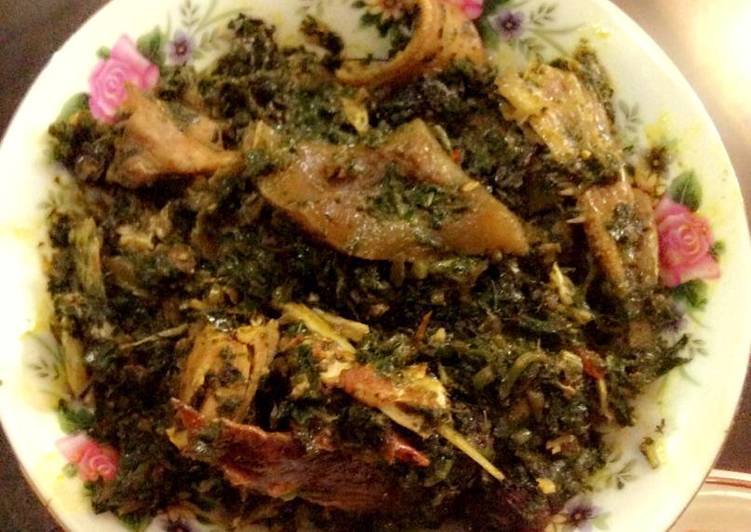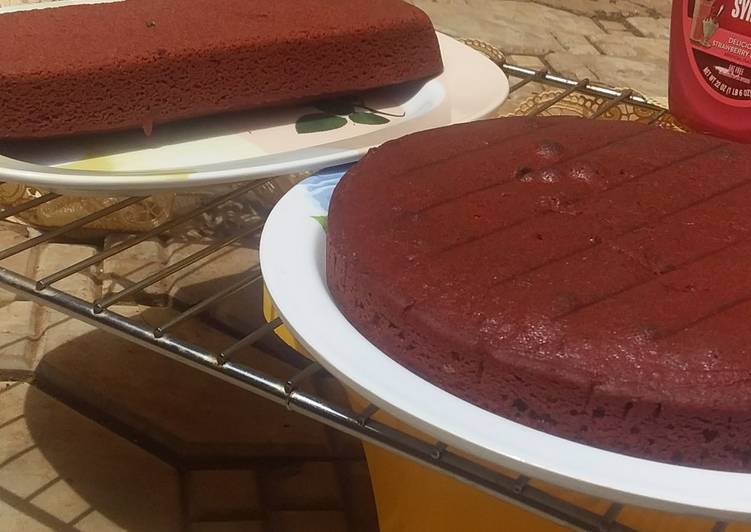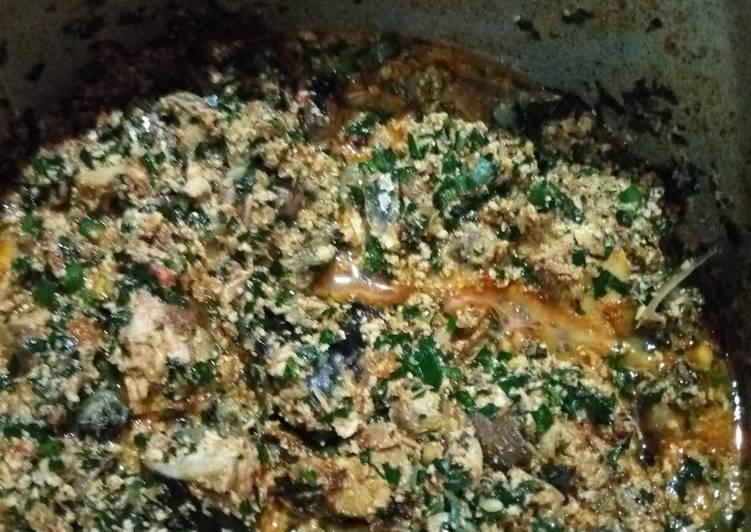
Hello everybody, hope you’re having an amazing day today. Today, I’m gonna show you how to prepare a distinctive dish, edikaikong (vegetable soup). One of my favorites. This time, I will make it a little bit tasty. This will be really delicious.
EdikaIkong (vegetable soup) is one of the most well liked of recent trending meals in the world. It’s simple, it’s quick, it tastes delicious. It is enjoyed by millions daily. EdikaIkong (vegetable soup) is something that I have loved my entire life. They’re nice and they look fantastic.
Edikaikong soup has over the years topped the list of Nigerian popular soups because of its nutritional value and ease of preparation. When we say "vegetable soup" in Nigeria, we are actually talking. Edikaikong - A traditional Calabar recipe.
To begin with this recipe, we must first prepare a few ingredients. You can have edikaikong (vegetable soup) using 22 ingredients and 5 steps. Here is how you can achieve that.
The ingredients needed to make EdikaIkong (vegetable soup):
- Get Ugwu
- Get Waterleave
- Take Crayfish
- Take Palm oil
- Get Meat
- Get Dry fish
- Prepare Kpomo
- Get Onions, pepper
- Take cube Salt, seasoning
- Make ready Stock fish
- Prepare Palm oil
- Take Ugwu
- Make ready Waterleave
- Prepare Crayfish
- Take Palm oil
- Take Meat
- Prepare Dry fish
- Make ready Kpomo
- Prepare Onions, pepper
- Make ready cube Salt, seasoning
- Get Stock fish
- Get Palm oil
Edikaikong/Edikang Ikong soup is a nutritious, tasty, leafy green vegetable soup from Southern Nigeria made with fluted pumpkin leaves and Malabar spinach. Edikaikong is a Nigerian soup that is especially beloved because it is a valuable source of nutrition The name edikaikong means vegetable soup, and it is often served with eba, pounded yam, fufu, or. Edikaikong (Edikainkong) is a Nigerian soup made of leafy vegetables. This edikaikong recipe is easy and delicious.
Steps to make EdikaIkong (vegetable soup):
- Wash meat, fish,, kpomo and stock fish with hot water and salt, season Nd steam with onions, pepper, salt, cubes. Cook meat till soft, remove fish half way into the cooking so it doesn't scatter.
- Wash and cut ugwu Nd water leaves into tiny bits and put the waterleaves in a pot on medium heat so it will boil and dry off its water, then add crayfish, the meat stock, meat, fish, stock fish, kpomo and stir let them boil together, add palm oil and allow to boil for about 5minutes
- Taste to check if it's well seasoned and balance if not, then add the vegetable (ugwu) store and turn off heat immediately to maintain freshness, the heat of the soup will make the vegetable softer before it gets cold. Serve with preferred swallow.
- Wash and cut ugwu Nd water leaves into tiny bits and put the waterleaves in a pot on medium heat so it will boil and dry off its water, then add crayfish, the meat stock, meat, fish, stock fish, kpomo and stir let them boil together, add palm oil and allow to boil for about 5minutes
- Taste to check if it's well seasoned and balance if not, then add the vegetable (ugwu) store and turn off heat immediately to maintain freshness, the heat of the soup will make the vegetable softer before it gets cold. Serve with preferred swallow.
It is native to Calabar people and typically made with two types of vegetable. Edikaikong soup, also known as "Edikang Ikong soup" is a dish originating from Nigeria. There are lots of variations for the soup. For example, some people choose to add onions. Edikang Ikong / Edikaikong soup is a nutritious Nigerian soup recipe made with a generous amount of fresh leafy vegetables, dried fish and assorted meat.
So that is going to wrap this up for this exceptional food edikaikong (vegetable soup) recipe. Thanks so much for reading. I’m confident you can make this at home. There’s gonna be interesting food in home recipes coming up. Don’t forget to bookmark this page on your browser, and share it to your family, colleague and friends. Thank you for reading. Go on get cooking!


